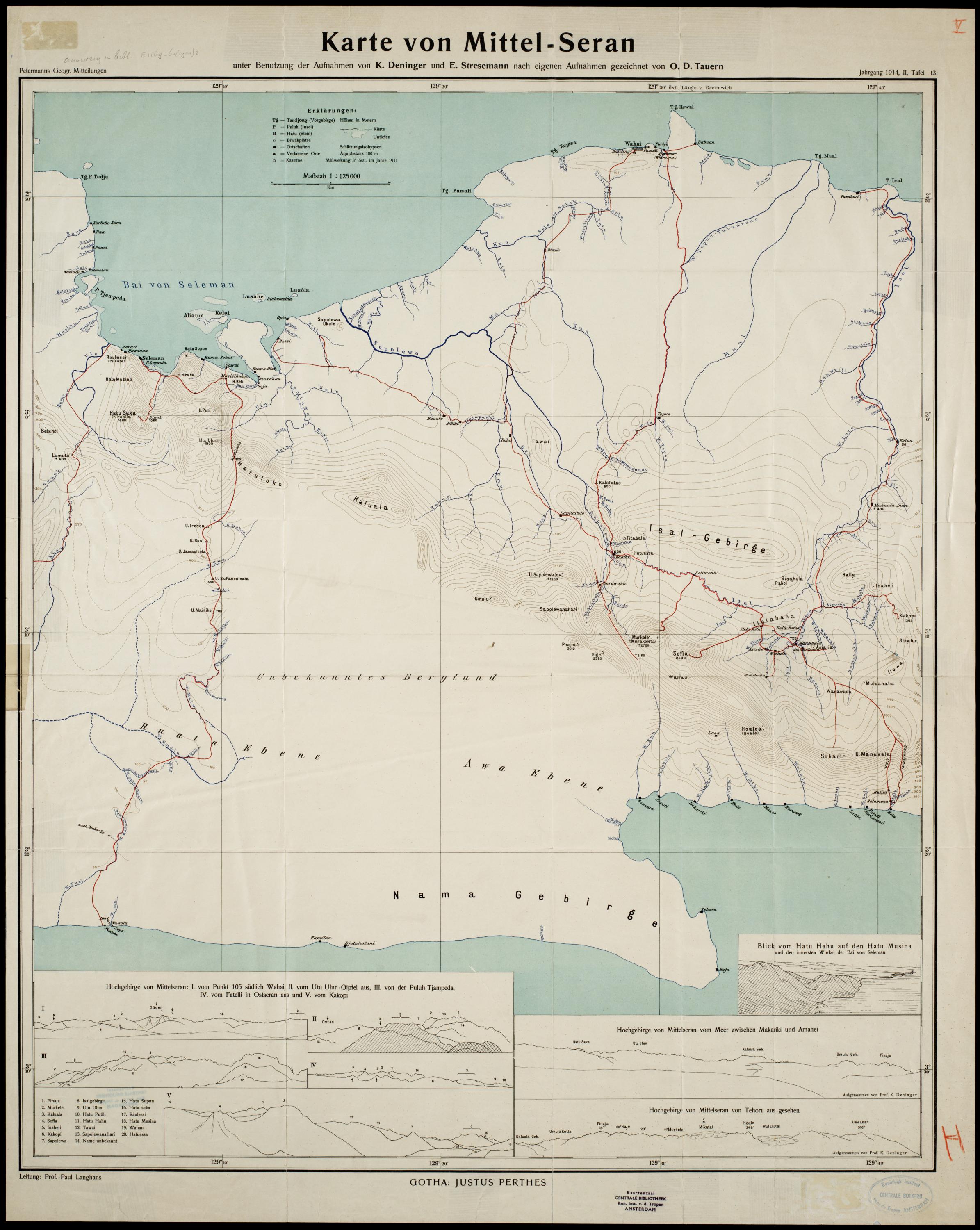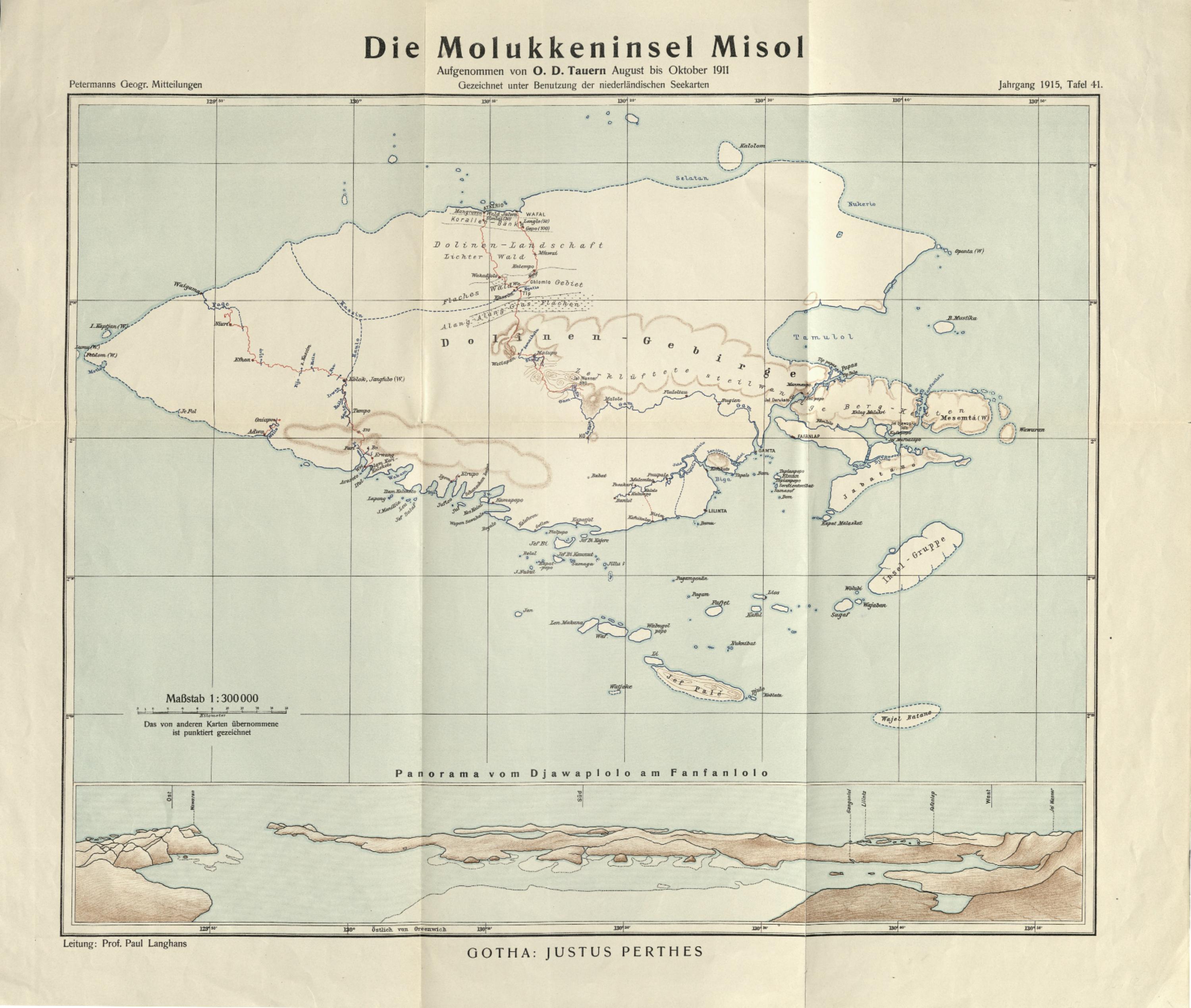Tauern's route
An overview map of Seram, edited by Deninger and Tauern, was published in Petermanns Geographische Mitteilungen in 1914. It combines geographic with ethnographic information about the island. The map below depicts the central part of Seram and was put together by Tauern using his own records as well as those of Deninger and Stresemann. Although it is not explicitely mentioned in the map legend, the red lines point to the paths that the expedition members took during their time on Seram.
At the same time, this and other maps clearly show how collected data was transferred into a matrix of knowledge visualization that is reflective of the colonial logic. Paul Langhans (1867-1952), who is mentioned on the bottom left of the document, supervised the creation of the map in his role as leading cartographer in the publishing house and editor in chief of Petermanns geographische Mitteilungen (1909-1937). Firmly rooted in the cartographic tradition of the 19th century, his maps were characterized by a high density of information that compressed multiple layers of space and time into a singular visual framework. While it was one of the most relevant German journals for the publication of geographic research at the time, Langhans ran it as a convinced anti-Semite and ideological pioneer of National Socialism. The maps informed by the II. Freiburg Moluccan Expedition and published in Petermanns geographische Mitteilungen were not created by Langhans himself, but rather produced under his supervision—yet his cartographic style is reflected in them.
The map below depicts the island Misool and was designed by Tauern. In the process, he used his own records from his stay on Misool as well as data from Dutch maps. According to a comment on the bottom left of the map, the dotted lines mark those cartographic information which have been taken from available Dutch maritime maps. The solid lines, thus, illustrate the precise contribution of Odo Deodatus I. Tauern to the cartography of Misool.

